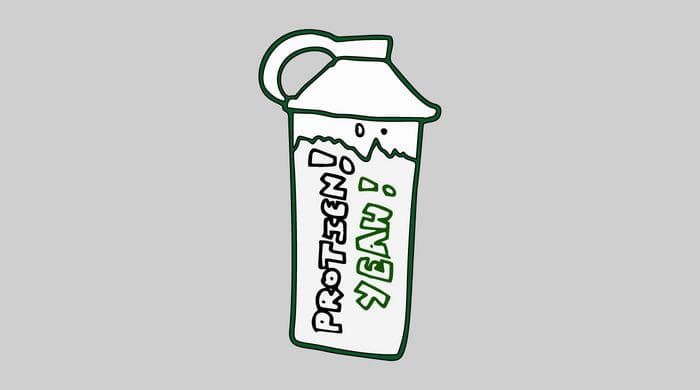Choose animal-based protein

Protein is a building material for tissues and hormones.
Without enough protein in your diet, you risk poor growth.
Balance towards animal protein
Animal sources of protein contain a complete set of replaceable and irreplaceable amino acids, increase IGF-1,1 and are >95% digestible.
Plant sources contain fiber and improve gastrointestinal function. However, they often do not have a complete set of amino acids, so they are combined, for example, grains and legumes, nuts and legumes.2 Their digestibility is 60-80%.
Maintain a ratio of animal and plant proteins of approximately 60% to 40%.3
Slow proteins at night, fast ones after exercise
In one study, casein protein taken before bedtime prevented the breakdown of one’s own proteins during the night, while whey protein recovered faster after training.4
- What’s better after training? Whey sports supplements that are quickly absorbed. Milk will also work.5
- At other times? Casein sports supplements, as well as dairy, egg, meat (beef), soy, and any plant and animal proteins with a longer digestion time.
More protein
The safe upper limit of protein is 2 grams per kilogram of body weight per day, and the lower limit is 0.8.6 Optimal for bones may be 1.5 grams.7
About 20 grams will be absorbed in one meal.
…consumption of higher protein doses (> 20 g) results in greater amino acid oxidation (Schoenfeld & Aragon, 2018).
In studies where athletes ate at least 4 servings of 20 grams, better results were obtained in terms of mass gain.8
It is not excluded that during the active growth phase, even more protein will be useful, because everything goes to the rapid construction of new tissue.
-
Rich-Edwards, J. W., Ganmaa, D., Pollak, M. N., Nakamoto, E. K., Kleinman, K., Tserendolgor, U., Willett, W. C., & Frazier, A. L. (2007). Milk consumption and the prepubertal somatotropic axis. ↩
-
Nutrition: science and everyday application, v. 1.0 by Open Oregon ↩
-
Нормы физиологических потребностей в энергии и пищевых веществах для различных групп населения Российской Федерации by cntd.ru ↩
-
Boirie, Y., Dangin, M., Gachon, P., Vasson, M. P., Maubois, J. L., & Beaufrère, B. (1997). Slow and fast dietary proteins differently modulate postprandial protein accretion. ↩
-
Chapter 6 “Proteins” from the book An Introduction to Nutrition (v. 1.0) ↩
-
Dietary Reference Intakes for Energy, Carbohydrate, Fiber, Fat, Fatty Acids, Cholesterol, Protein, and Amino Acids (2005) Chapter:10 Protein and Amino Acids ↩
-
Schoenfeld, B. J., & Aragon, A. A. (2018). How much protein can the body use in a single meal for muscle-building? Implications for daily protein distribution. Journal of the International Society of Sports Nutrition, 15, 10. ↩
Posted on
Last edited on
